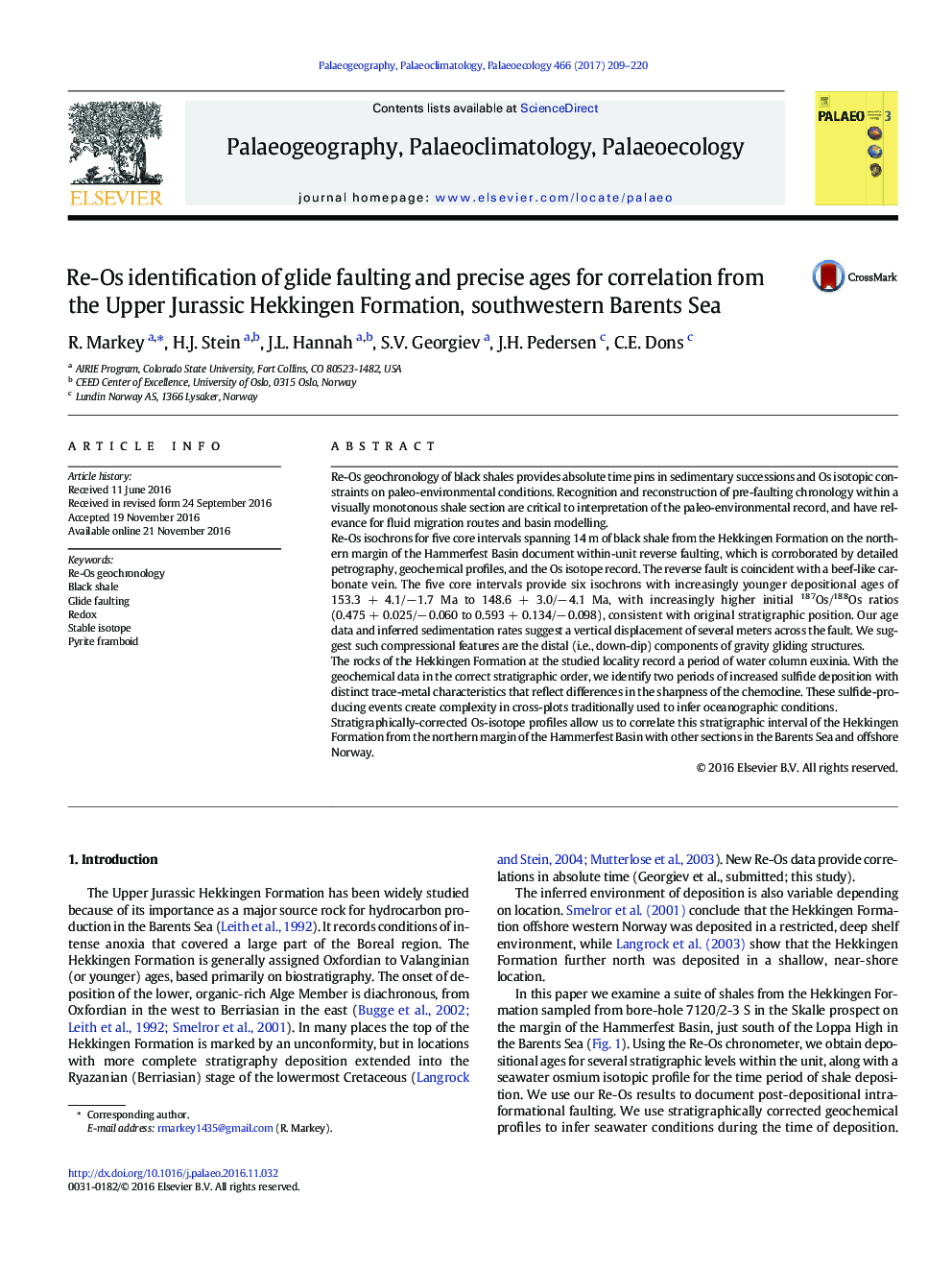| Article ID | Journal | Published Year | Pages | File Type |
|---|---|---|---|---|
| 5756031 | Palaeogeography, Palaeoclimatology, Palaeoecology | 2017 | 12 Pages |
â¢Nominal Re-Os ages of the studied Hekkingen Formation range from 153.3 to 148.6 Ma.â¢Multiple evidence identifies reverse faulting, perhaps related to gravity glides.â¢Trace metal geochemistry indicates bottom water euxinia with 100% DOPT.â¢Geochemical data restored to pre-faulting order reveal two pyrite-rich events.â¢Regional comparison reveals later onset of deposition of Hekkingen shales at Skalle.
Re-Os geochronology of black shales provides absolute time pins in sedimentary successions and Os isotopic constraints on paleo-environmental conditions. Recognition and reconstruction of pre-faulting chronology within a visually monotonous shale section are critical to interpretation of the paleo-environmental record, and have relevance for fluid migration routes and basin modelling.Re-Os isochrons for five core intervals spanning 14 m of black shale from the Hekkingen Formation on the northern margin of the Hammerfest Basin document within-unit reverse faulting, which is corroborated by detailed petrography, geochemical profiles, and the Os isotope record. The reverse fault is coincident with a beef-like carbonate vein. The five core intervals provide six isochrons with increasingly younger depositional ages of 153.3 + 4.1/â 1.7 Ma to 148.6 + 3.0/â 4.1 Ma, with increasingly higher initial 187Os/188Os ratios (0.475 + 0.025/â 0.060 to 0.593 + 0.134/â 0.098), consistent with original stratigraphic position. Our age data and inferred sedimentation rates suggest a vertical displacement of several meters across the fault. We suggest such compressional features are the distal (i.e., down-dip) components of gravity gliding structures.The rocks of the Hekkingen Formation at the studied locality record a period of water column euxinia. With the geochemical data in the correct stratigraphic order, we identify two periods of increased sulfide deposition with distinct trace-metal characteristics that reflect differences in the sharpness of the chemocline. These sulfide-producing events create complexity in cross-plots traditionally used to infer oceanographic conditions.Stratigraphically-corrected Os-isotope profiles allow us to correlate this stratigraphic interval of the Hekkingen Formation from the northern margin of the Hammerfest Basin with other sections in the Barents Sea and offshore Norway.
